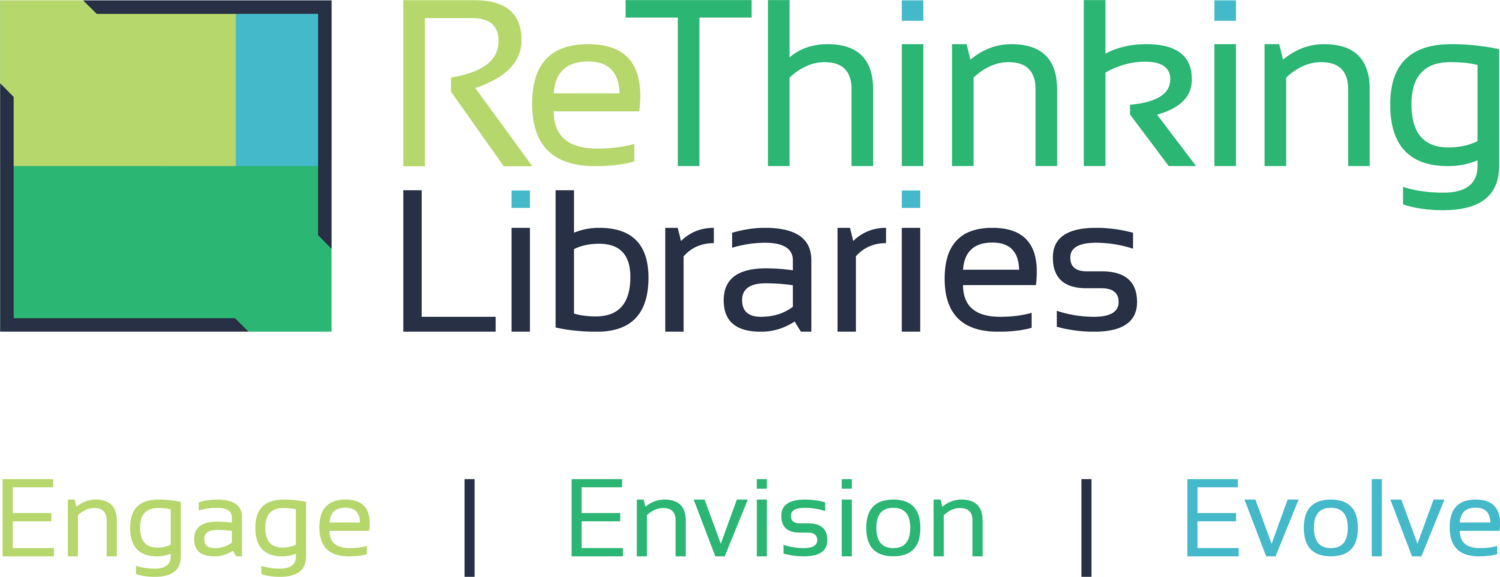Engaging Your Community—Even When It’s Complicated
Let’s be honest: the world we’re working in today is a lot different than it was just a few years ago. Community engagement used to feel more straightforward—show up, invite input, listen, and build something together. Now, that process can be complicated by political tension, misinformation, and fear.
But if there’s one thing ReThinking Libraries has learned after decades of strategic planning—in libraries, businesses, and schools—it’s this: engagement is still worth it. In fact, it’s more important than ever.
A Look Back
When Principal Rob Cullin first started strategic planning with libraries in 2014, community engagement meant gathering people in a room—a literal room, with coffee and cookies—and having conversations about their hopes for the future. Sure, once in a while you’d hear from someone who didn’t want the library to use more tax dollars, but even then, those voices were usually respectful. They didn’t want the library to disappear; they just wanted it to work within its means.
Fast forward to 2022, and we saw a noticeable shift. More divisive voices started showing up, sometimes with pre-packaged talking points that didn’t seem connected to the actual community. It was frustrating—but it also taught us a lot about how to adapt.
How We’ve Changed Our Approach
At ReThinking Libraries, we’ve made several changes to how we facilitate community engagement. Some were born out of necessity during the pandemic—virtual staff sessions, for instance, became a practical and equitable way to include voices across multi-branch systems. Others were in response to the growing complexity of conversations, particularly around DEI, funding, and trust in government institutions.
Today, we approach each session with flexibility and intentionality. We still want to have deep conversations about equity, access, and community needs—but we’re careful about language, tone, and setting. We don’t shy away from tough conversations, but we also don’t let one loud voice dominate the room.
Is Now a Good Time for Engagement?
Absolutely. In fact, now might be one of the best times.
Despite the noise, we’re seeing that communities are largely supportive of their libraries. While national conversations around book bans and identity politics make headlines, the local library remains a trusted resource in many towns and neighborhoods. People still see their library as a place of connection, learning, and belonging.
That said, we understand why some libraries might feel hesitant. There’s a natural fear of saying the wrong thing, or of drawing attention at the wrong moment. But avoiding the conversation doesn’t help. The more you engage—with intention and care—the more likely your community is to stand behind you when it counts.
Best Practices for Meaningful Engagement
Here are a few strategies we’ve seen work well across the country:
1. Don’t Rely on Marketing Alone
Surveys? Sure, you can send those out by email. But if you want people to show up to focus groups, you need personal invitations. Ask staff to invite their program attendees. Ask board members to each bring six people. Show people that their voices truly matter—not just in theory, but in practice.
2. Make It Comfortable to Participate
Offer snacks. Provide childcare or translation services when needed. One of our most successful sessions was in a rural North Carolina county with a large Hispanic population. A staff member sent personal text invitations to 300 contacts—and 75 people showed up. They engaged deeply, and we learned a great deal from their perspectives.
3. Use a Flexible Format
Avoid rigid question-and-answer formats that feel like in-person surveys. We prefer to present a set of topics and images to prompt discussion, then let the group guide the conversation. We aim to get people talking to each other—that’s where the real insights come from.
4. Be Inclusive—but Also Protective
Libraries serve all members of the community, including immigrants, LGBTQ+ individuals, and other groups that may feel vulnerable right now. If you're asking someone to attend a public event or fill out a survey, make sure you're not putting them at risk. Anonymity matters. Trust-building matters.
5. Separate Staff Roles During Engagement
In internal sessions, don’t put frontline staff in a room with their supervisors. Create safe spaces for open dialogue. The same goes for trustees and directors—these roles carry weight, and their presence can shift the tone. We recommend that directors join sessions with board members, while staff meet separately.
6. Listen to Everyone—Even When It’s Hard
When someone brings a dissenting view to a session, acknowledge it. Don’t let them dominate the room, but don’t shut them down either. Unless it’s hate speech, every opinion deserves to be heard. That’s how we build trust across political and ideological divides.
7. Frame Your Invitations Thoughtfully
Not everyone is a frequent library user—and that’s okay. When inviting non-users, let them know you value their insights about the community, not just the library. They’ll often tell you what barriers exist or how to make your services more relevant.
8. Consider a Third Party
It’s hard for people to be completely honest when staff or trustees are in the room. If you’re not hiring a consultant like ReThinking Libraries, consider partnering with another library to conduct each other’s engagement. You’ll get more candid responses—and you’ll avoid the risk of the session becoming a debate about past decisions.
Moving Forward
At ReThinking Libraries, we believe that community engagement is more than a checkbox on the path to a strategic plan. It’s about building a shared vision for the future—one that’s grounded in real conversations, with real people, in real time.
We’re here to help, whether you’re looking for full-service planning or just support with engagement. Because at the end of the day, it’s not about the plan—it’s about the people. And the best way to serve them is to ask them what they need.
Want to talk about your library’s next step in community engagement? We’d love to hear from you. Visit ReThinkingLibraries.org to learn more.



